You are here:
Softmirrors.com
> Products > Reservoir Characterization

Reservoir Characterization
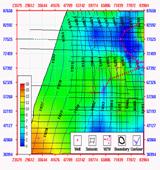 |
Seismic Irregular
Property to Regular Property Mapping
The
coordinate system of seismic property is Cartesian (x, y). To study anisotropic
effects, the interpolation methods, such as Kriging,
should be performed in the flow-oriented (s,n) coordinate
systems. The irregular sliced seismic property,
especially from seismic 2D lines,
will be re-interpolated and re-scaled into regular
geometry dataset, which can be used to map these
properties. |
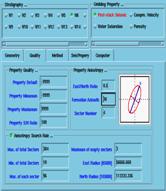 |
Reservoir Characterization
Anisotropic Setting
Because the well data is
a sparse with high vertical resolution and the seismic is
high space resolution, to combine both
dataset is crucial for reservoir characterization mapping.
The sliced-seismic property is re-interpolated into regular
geometry property. Anisotropic Support Vector Regression
will be used to build the bridges between petrophysical property, such
as porosity and volume of shale, and sliced regular
seismic property. The training phase of SVR will
generate a prediction function from the target pairs of
petrophysical property and sliced seismic property, and during the
mapping phase, the SVR will make the petrophysical
property prediction based on the function.
The target petrophysical property can be evaluated using
single/multi-well solutions.
|
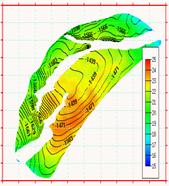 |
Sand and Net Pay
Prediction
The gross-sand and net
pay can be predicted using a SVR engine after the training
phase, which will generate a prediction based on both
sand/net pay and regular sliced-SeisLog property.
During the mapping phase, the sand thickness and net pay
will be predicted. The sand thickness can be used to trace
sand body distribution. The target sand and net pay can be
calculated from single/multi-well solutions
|
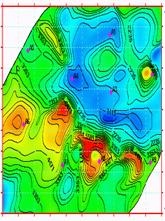 |
Fluid
Content Prediction
Fluid content prediction is important to
classify whether the formation is oil, gas or water.
Usually the single well solutions can calculate the water
saturation and oil/gas saturation, which will be helpful
to determine the formation is water or oil or gas.
Although seismic and seismic-related attributes can not
give us direct info related to oil, gas and water, in
fact, seismic, especially pre-stack seismic gathers are
affected by oil, gas and water contributions. The
attributes from time-frequency of post-stack, and these
attributes from time-velocity and time-radon of pre-stack
seismic have have been proven the capability to propagate
the log fluid content, such as water saturation, using a SVR engine. Another parameter, hydrocarbon
pore volume integrated sand thickness, porosity and oil saturation can
also be mapping using the SVR engine. The distributions of
water/oil saturation, sand thickness and hydrocarbon
pore volume are direct contribution for fluid content
prediction.
|
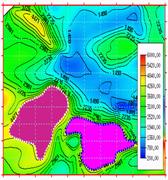 |
Well Suggestions and Reserves Estimations
The petrophysical property
distributions, such as net pay and hydrocarbon pore volume
maps, will be a direct info related to well suggestions
and reserves estimations. The well suggestions
and reserves estimation should consider the contributions
of all target layers. The hydrocarbon pore volume also
will be a direct tool for "Sweet Spots" identification.
For the shale gas reservoir evaluation, there are other
petrophysical properties, such as Poisson Ratio, Total
Organic Content (TOC) and in-situ stress should be
evaluated for the "Sweet Spots" identification.
|
|

|
Useful Links:
|